AMPED AMERICA AAP-1 Pre-Amplifier and 2400 Stereo Amplifier by Greg Voth
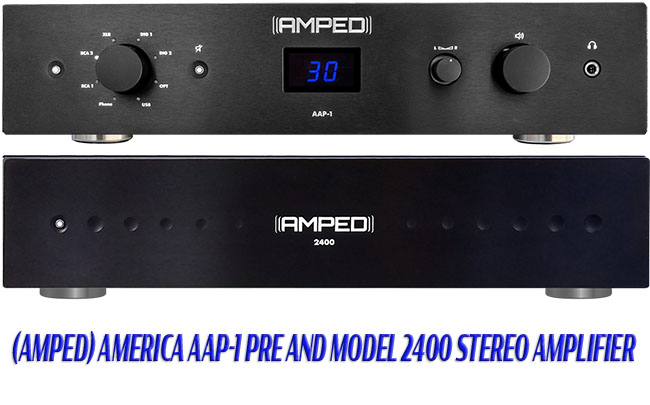
 Once things began opening up, my first audio trek with Clement was meeting with Boris Meltsner, owner of the New Jersey-based AMPED America brand. As we pulled up to the warehouse, we were warmly greeted by Meltsner and ushered into his warehouse. This ample space, at one point, held a thriving 4-station electronics repair business. As Meltsner spoke of audio, it was apparent that he’s a tech-savvy entrepreneur who’s lived many lives in the field of audio.
Once things began opening up, my first audio trek with Clement was meeting with Boris Meltsner, owner of the New Jersey-based AMPED America brand. As we pulled up to the warehouse, we were warmly greeted by Meltsner and ushered into his warehouse. This ample space, at one point, held a thriving 4-station electronics repair business. As Meltsner spoke of audio, it was apparent that he’s a tech-savvy entrepreneur who’s lived many lives in the field of audio.
We gathered in the front room – no fussy install here, no room treatments nor fancy audiophile filagree in this workspace. Against the room’s four walls were components of all sorts; some Meltsner designed and some he imports. We listened to two of Meltsner’s designs in the AMPED America AAP-1 preamp and AMP-2400 Stereo Power Amplifier, alongside a turntable as a source as Meltsner switched between a few pairs of speakers. He spun assorted tracks from a few LPs as we took in the sonics while Clement settled into Meltsner’s office chair. Boris swapped back and forth between a couple of Acoustique (AQ) Passion floorstanders and PassionTeen monitors. Made in the Czech Republic, the PassionTeen sports a surprisingly modern angular-designed look that I had also caught my attention at a recent show. I was particularly drawn to the Passion (reviewed here) for their full-bodied presentation.
While there was no pretense of fancy audiophile-ness in this warehouse set up, we felt something worthy in the American-built AMPED components. We decided to give the AMPED American preamp and power amp, along with the AQ PassionTeen monitors, a closer inspection in our own listening space.
 I placed both the AAP-1 pre and the AMP-2400 stereo amplifier in my temporary reviewing rig, served musically via my laptop, and connected with a 50-foot long optical cable for play from my more distant iMac and Memory Player Mini. The PassionTeen monitors were brought home for Tim Barrall (my brother-in-law) to review (however, I listened for a week before they changed hands). This solid wood AQ speaker’s finish is glossy and gorgeous.
I placed both the AAP-1 pre and the AMP-2400 stereo amplifier in my temporary reviewing rig, served musically via my laptop, and connected with a 50-foot long optical cable for play from my more distant iMac and Memory Player Mini. The PassionTeen monitors were brought home for Tim Barrall (my brother-in-law) to review (however, I listened for a week before they changed hands). This solid wood AQ speaker’s finish is glossy and gorgeous.
The AMPED America AAP-1 Preamplifier
AMPED America calls its AAP-1 the “Heart of a Modern 2-Channel System,” an ultra high-grade, technologically advanced analog and digital unit packed with features today’s audiophiles expect from a high-performance stereo. Externally, along with its digital source inputs; (two digital coax, one optical, one USB), both balanced and unbalanced In and Out. A single pair of gold-plated RCA phono inputs, along with a mini-toggle for either MM (47k Ohms) or MC (100 Ohms) loading. A pair of RCA inputs for line sources, a pair of pre-outs, and a rare-to-find pair of sub-outs complete the rear. There’s a mini-toggle selector for 0dB or -6dB for headphone gain to, say, better level the output between low/high impedance headphones. There’s also a front-mounted standby button, mute button, balance control, and a 1/4″ headphone input jack. The rear panel also sports a mini USB input for software updating, Infra-Red input, and a 12V trigger out. The power On and Off toggle switch also is located on the rear panel. The AAP-1 box also includes not one but two of its small but functional remote controls. All this and a five-year limited manufacturer warranty backs it.
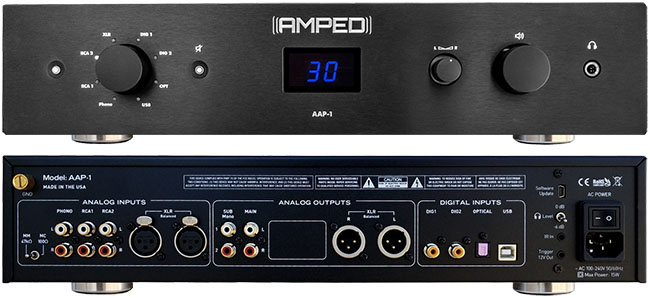
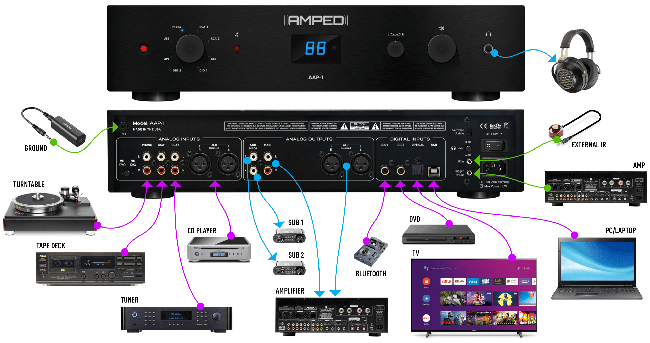
The AAP-1’s black anodized aluminum front panel (only available in black face) and blue LED display lettering were pleasing to the eye. The standby and mute functions on the front of the unit, when engaged, are lit in red. The AAP-1 measures 19″ w x 3.5″ h x 12.3″ d and weighs 17.5 lbs.
Internally, the AAP-1 shines, with its ESS 9018K2M SABRE Reference HyperStream 32-bit DAC, 384kHz PCM I²S, DSD 11.2MHz, and support for SPDIF, PCM ( I²S, LJ 16-32-bit) or DSD input in both ASRC (asynchronous sample rate converter) and Synchronous modes. This preamplifier’s internal architecture includes the 64-bit accumulator and 32-bit processing and AMPED America’s patented time-domain jitter eliminator. Meltsner took extra care to isolate the AAP-1’s critical components to provide the cleanest and most transparent sound possible.
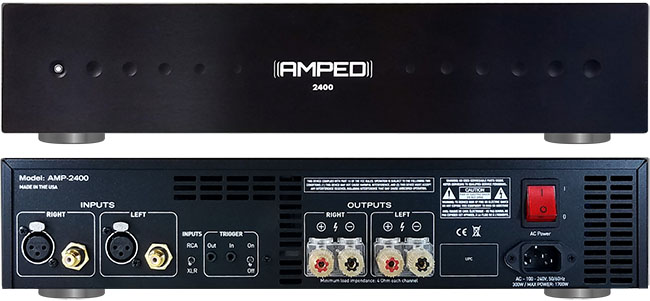
The AMPED America AMP-2400
Designed as the perfect mate with the AAP-1 preamplifier, the AMP-2400 stereo Class-D power amplifier features both balanced and unbalanced inputs (and a mini-toggle to select between). Two pairs of 5-way binding posts for speaker cable connection come standard. A rear-mounted On/Off toggle switch, IEC, and trigger completes the rear panel. The AAP-2400 has a power rating of 400 watts/channel @ 8 Ohms and 800 watts/channel @ 4 Ohms.
Boris Meltsner Doesn’t Bore Us.
I spoke to Boris Meltsner by phone about his journey with these components. I wish you all could hear that strong Russian dialect. I had hoped to capture a bit of Meltsner’s outgoing personality in this piece but, when I told him I wanted some quotes, he pushed back at the idea, laughing and saying, “[reviewers] are always trying to capture my personality!” He’d instead focus on what he believes –
“Build it right” and “Quality parts, quality build,” his mantras.
Meltsner, the visionary of these first two AMPED American components, was very specific about what he wanted – components designed and assembled in New Jersey. Meltsner worked with two engineers, one mechanical engineer, and two workers to craft the many prototypes produced (I heard him say “over 100” – ICE, Hypex, Pascal, and so on), before settling on these first two pieces, the genesis of the AMPED America line. Most importantly, Meltsner said that “there are two things that are most critical when designing a preamp like his AAP-1 preamplifier, #1, include a phono stage, and #2, take the utmost care with the conversion from analog to digital and back again.”
Made In America means something to the man. Meltsner takes great pride that his products are designed and assembled here in the States. He buys all US-made components for his circuit boards and tests each before shipping them to China for assembly. Yeah, China, since they are all set up for circuit board tasks, something hard to come by here in the States. Once the circuit boards return, the final result is tested, and, once approved, the boards go into production. The details interest this man, like his AMPED America components, including real XLR – true XLR that drains to ground, improving performance, unlike the XLR that some manufacturers include, which has its ground shorted. Now he’s working on getting his remotes made in America but hasn’t yet found a suitable manufacturer.
Meltsner prefers the sound of an optical connection over digital, saying, “It’s softer,” and likes short cable lengths (WireWorld cables over AudioQuest). While his included phono stage is quite good, he pointed out that most people with $3,000-5,000 invested in a turntable always buy an external phono stage—a man with an actual honest bone in his body.
Listening Set Up and Headphones
 After a short loan of the AMPED America to Ed Van Winkle for his upcoming AQ floor stander review, I connected the AAP-1 and AMP-2400 via XLR, plug in some sources, and warmed things up to put the equipment through some paces. The speakers I’ll be using are the FinkTeam KIM’s, currently under review. The two-way bass-reflex KIM’s offer a decidedly different approach and sensitivity (86dB) than the highly-efficient Tekton Double Impacts (98.82dB), the KIM stand-mounted monitors, with one 8″ paper cone woofer and a single Mundorf (OEM) AMT tweeter per cabinet – quite a contrast to the multi-driver, taller Double Impacts.
After a short loan of the AMPED America to Ed Van Winkle for his upcoming AQ floor stander review, I connected the AAP-1 and AMP-2400 via XLR, plug in some sources, and warmed things up to put the equipment through some paces. The speakers I’ll be using are the FinkTeam KIM’s, currently under review. The two-way bass-reflex KIM’s offer a decidedly different approach and sensitivity (86dB) than the highly-efficient Tekton Double Impacts (98.82dB), the KIM stand-mounted monitors, with one 8″ paper cone woofer and a single Mundorf (OEM) AMT tweeter per cabinet – quite a contrast to the multi-driver, taller Double Impacts.
The AMPED America combo drove the KIM’s easily and to a listenable 50 on the AAP-1’s display. When checking out the front 1/4″ headphone jack, the preamp appropriately muted speaker output with headphones engaged. The AAP-1 drove my low impedance B&W P5’s to listenable volume at 47 on the display with the gain selector in the 0dB position. The volume lowered considerably when toggled to the -6dB position. Sennheiser HD650 headphones, being high impedance and therefore harder to drive, definitely appreciated the 0dB gain setting. This position helped deliver excellent listenable output at around 58 on the AAP-1’s display, not too far from the 50 gain setting used with the KIM speakers engaged. The gain selection with headphones is a feature some users will find very useful. You can better equalize the output levels between multiple headphones by simply flipping the switch to raise or lower the volume -6dB. It’s always a good idea to reduce the volume before disengaging any headphones, as the speaker volume might be all too loud once they kick in! I appreciate that the unit comes off mute when the AAP-1 is muted, and the volume is changed. I like that very much. I was sorely surprised when reviewing a previous preamp that stayed muted when the volume changed. Once it came off mute, I was stunned with overly loud output since its volume had accidentally been pushed while muted.
Listening and Turntable
I brought up my heavily modified Well-Tempered Simplex with its mounted Benz Silver moving coil to use as a source. Though lower in gain at 2mV output than your typical moving magnet (5 to 5.5mV), the Silver is considered high output MC. I upgraded to the Well-Tempered DPS power supply to further improve the table’s performance. The AAP-1’s phono section has a toggle to choose between MM and MC loads. The Silver’s recommended loading is 200 to 47k Ohms, so I decided on the recommended 47k Ohms MM setting since it is considered a high output cartridge. While I got a bit of a boost using the MC setting, I didn’t want to risk distortion, though that option might sound acceptable to your ear.
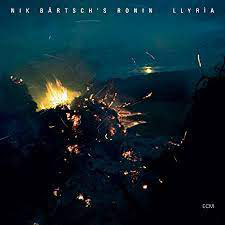 I put on Nik Bärtsch’s Ronin’s 2010 “Llyria,” a double-vinyl ECM release, adjusted the volume to 55 with the remote, and sat back. As Side 3 segued from the quiet in introspective Modul 53 to Modul 51, a presentation that began quietly, with slow-building rhythmic interest, grew to dominate the stage with grip, growl, and a great deal of rhythmic content, solid low frequencies, and quick, punchy transients. I heard the same during the play of Cisco Records 2001 reissue of the Urania Records original “Prokofiev – Symphonic Suite of Waltzes, Op. 10 and Gypsy Fantasy From Stone Flower” Ballet (1959), an HQ180 RTI pressing. This first recording of the Kansas City Symphony Orchestra under Hans Schweiger’s baton is a hell of a first effort. A click up in volume to 58, then 59 accentuated the occasional passage, as this reissue was delivered quite well, with its persistent strings and dynamic panache intact. Quiet passages were indeed delicate and the louder robust and forceful.
I put on Nik Bärtsch’s Ronin’s 2010 “Llyria,” a double-vinyl ECM release, adjusted the volume to 55 with the remote, and sat back. As Side 3 segued from the quiet in introspective Modul 53 to Modul 51, a presentation that began quietly, with slow-building rhythmic interest, grew to dominate the stage with grip, growl, and a great deal of rhythmic content, solid low frequencies, and quick, punchy transients. I heard the same during the play of Cisco Records 2001 reissue of the Urania Records original “Prokofiev – Symphonic Suite of Waltzes, Op. 10 and Gypsy Fantasy From Stone Flower” Ballet (1959), an HQ180 RTI pressing. This first recording of the Kansas City Symphony Orchestra under Hans Schweiger’s baton is a hell of a first effort. A click up in volume to 58, then 59 accentuated the occasional passage, as this reissue was delivered quite well, with its persistent strings and dynamic panache intact. Quiet passages were indeed delicate and the louder robust and forceful.
While it’s likely that the AAP-1 preamplifier’s internal phono stage would be bettered by my $2499 solid-state and $1200 tube phono stages, the AAP-1’s phono stage was no wallflower. The AMP-2400 provided ample power; its Class-D architecture served the preamp’s output with a bit of warmth, inviting color, and plenty of power, handling the 86dB sensitive FinkTeam KIM two-way monitors with ease. With the AAP-1’s displayed volume at 62, plenty more power was left in the AMP-2400 reserve.
Listening from Digital Sources
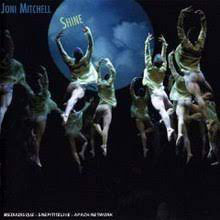 Served by an optical connection from the computer, “Shine,” from Joni Mitchell’s 2007 project of the same name (Hear Music, Universal 2007), flowed into the room on a textured bed of low frequencies, warm and rounded synth instrumentation. Shine boasts dense percussive accents emoting from a warm and fully mature woman’s voice (quite a contrast to her youthful thin, and brassy tone). The AMP-2400 amplifier is rendered with a slight brightness compared to my Class AB power amp.
Served by an optical connection from the computer, “Shine,” from Joni Mitchell’s 2007 project of the same name (Hear Music, Universal 2007), flowed into the room on a textured bed of low frequencies, warm and rounded synth instrumentation. Shine boasts dense percussive accents emoting from a warm and fully mature woman’s voice (quite a contrast to her youthful thin, and brassy tone). The AMP-2400 amplifier is rendered with a slight brightness compared to my Class AB power amp.
Scoville, a song off Will Vinson, Gilad Hekselman, and Antonio Sanchez’s “Trio Grande” release (Whirlwind Recordings 2020), offered a wonderfully deep and gritty palette of guitar crunch, punctuated percussive richness, and rich sax lines. Gritty is indeed an excellent descriptive. This tune is titled in honor of guitarist John Scofield. It was fun, rich, and funky – the underlying power merely waiting for a reason to explode forth, it felt as though the band members were restraining themselves against that likelihood. ‘Round Midnight, from Ronnie Earl and The Broadcasters’ Colour Of Love (Verve 1997), presented a cool, bluesy melody from Earl’s Les Paul over a bed of low Leslie-influenced organ tone. The crunch and transient quickness of the organ’s rich, subdued passages worked well, as it swirled intensely just underneath the melody. Very cooly delivered by the AMP-2400.
There Is A Tide shows Potter’s multi-instrumentalist’s strengths, as he played drums, guitar, bass, percussion, woodwinds, and, as expected, saxophones on his inspired lockdown project. Potter’s compositional and arranging skills shine here, with nice grooves, quiet breaks, and interesting transitions, absent of the self-indulgent soloing that some home-recorded efforts end up becoming. There was a clearly defined journey as Potter navigates twists and turns well. Percussion had body, and the arrangements bobbed and weaved, displaying Potter’s instrumental prowess.
 We loved watching HBO’s “The Nevers” (Watertower Music 2021), and Mark Isham’s soundtrack certainly kept us riveted through its first season. This AMPED duo presented these earthbound instruments, augmented with natural, spacious, and dynamic sound effects, quite naturally. The strings grounded the work, showing the orchestra on a stage of apparent width and depth, as sounds, vocals and effects weaved thereby around and behind the melodies. At times the depth seemed to recede very far back. The power needed to dominate the moment was there when called for, thanks to the AMP-2400’s horsepower. The orchestra was as agile as it was capable, delivering relatively light and airy passages, along with low-frequency bombasts and those shudderingly fast transients that surprised and delighted us.
We loved watching HBO’s “The Nevers” (Watertower Music 2021), and Mark Isham’s soundtrack certainly kept us riveted through its first season. This AMPED duo presented these earthbound instruments, augmented with natural, spacious, and dynamic sound effects, quite naturally. The strings grounded the work, showing the orchestra on a stage of apparent width and depth, as sounds, vocals and effects weaved thereby around and behind the melodies. At times the depth seemed to recede very far back. The power needed to dominate the moment was there when called for, thanks to the AMP-2400’s horsepower. The orchestra was as agile as it was capable, delivering relatively light and airy passages, along with low-frequency bombasts and those shudderingly fast transients that surprised and delighted us.
The Wrap
I liked the AMPED American AAP-1 and its mate, the AMP-2400 while enjoying the AAP-1’s impressive list of features and functionality. No question, there’s a lot to like about this two-piece combo, especially at its $8k price point. All in all, I felt my SBS designs (a 125 watt per Class A/B design) to be a tad more analog-like sounding to these ears. However, the AMP-2400 comes to the party with nearly three times more handling power at 400 watts per. Due to AMP-2400’s Class D topology and power rating, it has remarkable low-end dynamics. It handled the highly efficient Tekton Double Impacts (98dB) with the greatest ease, never allowing it to break a sweat. Do give the AMPED America line a listen.


greg voth
Product and Price:
AMPED America AAP-1 Pre-Amplifier
$2,999.00 US
AMPED AMERICA 2400 Power Amplifier
$4,999.00 US
– – –
MADE in the USA by AMPED America
Five-year limited manufacturer warranty
Stereo Times Masthead
Publisher/Founder
Clement Perry
Editor
Dave Thomas
Senior Editors
Frank Alles, Mike Girardi, John Hoffman, Russell Lichter, Terry London, Moreno Mitchell, Paul Szabady, Bill Wells, Mike Wright, Stephen Yan, and Rob Dockery
Current Contributors
David Abramson, Tim Barrall, Dave Allison, Ron Cook, Lewis Dardick, Dan Secula, Don Shaulis, Greg Simmons, Eric Teh, Greg Voth, Richard Willie, Ed Van Winkle, and Rob Dockery
Music Reviewers:
Carlos Sanchez, John Jonczyk, John Sprung and Russell Lichter
Site Management Clement Perry
Ad Designer: Martin Perry







Be the first to comment on: AMPED AMERICA AAP-1 Pre-Amplifier and 2400 Stereo Amplifier by Greg Voth